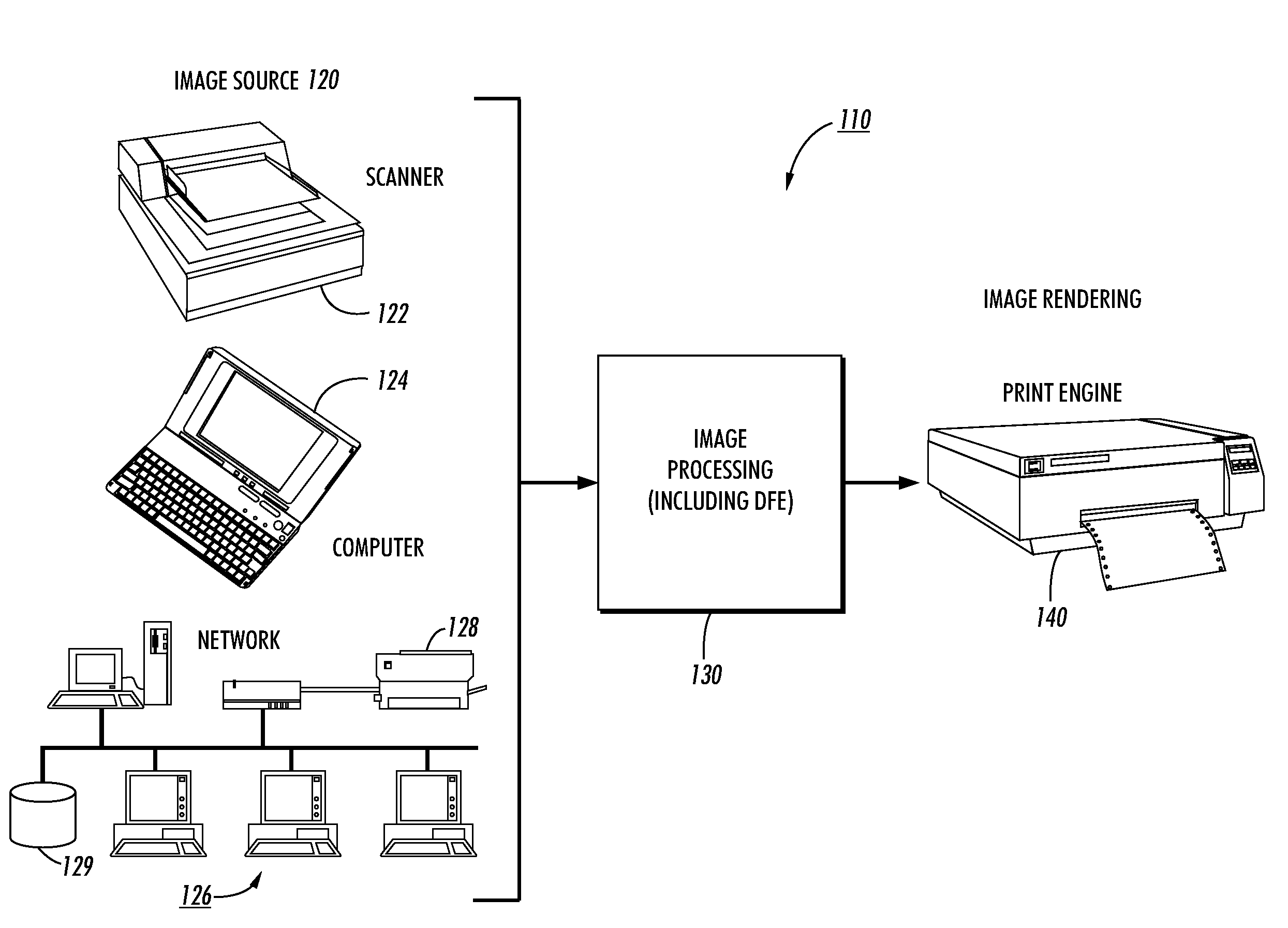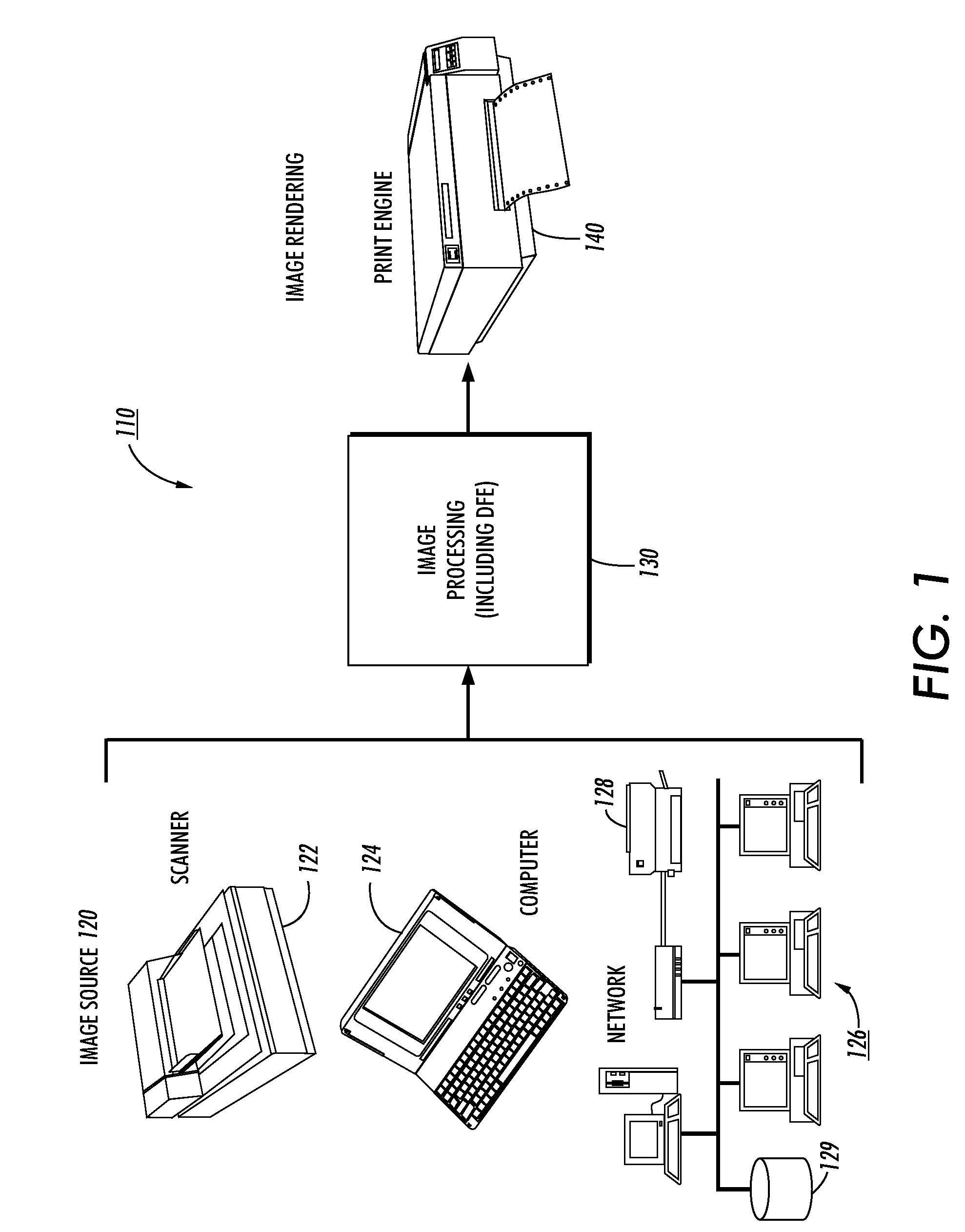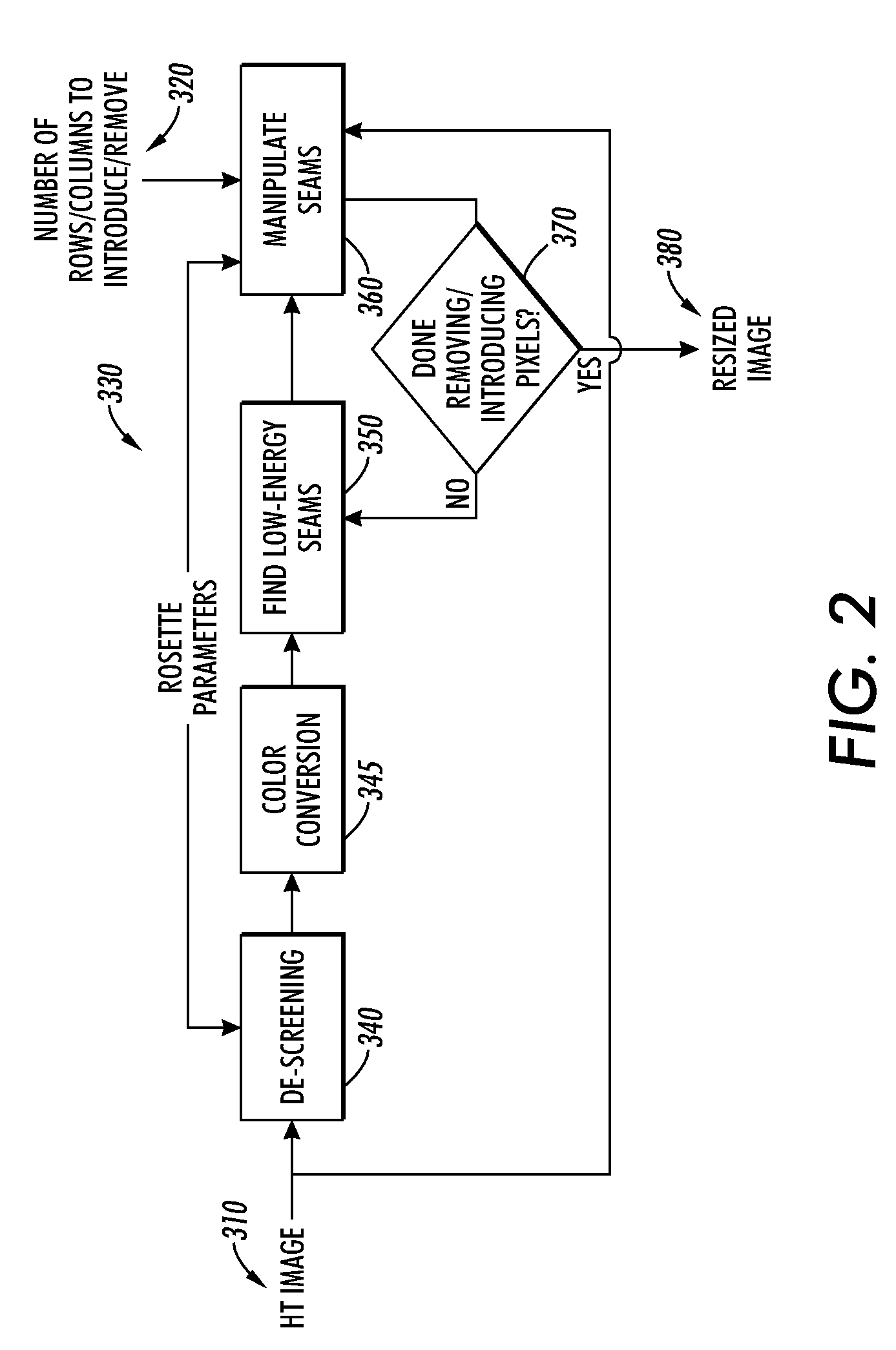Content-aware resizing of uniform rosette color halftone images
a content-aware, color halftone technology, applied in the field of color halftone image resizing, can solve the problems of undesirable interference patterns, digital color halftoneing is the manifestation of moiré patterns, and the conventional resizing methods that utilize spatially consistent interpolation methods are unsuitable in this halftone image setting, so as to achieve the effect of changing the aspect ratio of an imag
- Summary
- Abstract
- Description
- Claims
- Application Information
AI Technical Summary
Benefits of technology
Problems solved by technology
Method used
Image
Examples
Embodiment Construction
[0033]The teachings herein are directed to a method and apparatus for resizing a halftone image using uniform rosette halftone tile parameters. In particular, the teachings herein resize an image by manipulating uniform rosette halftone tiles or cells along low energy uniform rosette halftone tile seams. By using the tile parameters to define the low energy uniform rosette halftone tile seams, a uniform rosette color halftone image can be resized while avoiding the defects associated with applying known resizing methods directly to color halftone images.
[0034]In one embodiment of the teachings herein, a digital uniform rosette color halftone image is received and a region of the digital uniform rosette color halftone image is resized through manipulation (be it replication or deletion) of low energy uniform rosette halftone tile seams within the color halftone image. Uniform rosette halftone cell parameters are received or derived from analysis of the color halftone image. A resizin...
PUM
 Login to View More
Login to View More Abstract
Description
Claims
Application Information
 Login to View More
Login to View More - R&D
- Intellectual Property
- Life Sciences
- Materials
- Tech Scout
- Unparalleled Data Quality
- Higher Quality Content
- 60% Fewer Hallucinations
Browse by: Latest US Patents, China's latest patents, Technical Efficacy Thesaurus, Application Domain, Technology Topic, Popular Technical Reports.
© 2025 PatSnap. All rights reserved.Legal|Privacy policy|Modern Slavery Act Transparency Statement|Sitemap|About US| Contact US: help@patsnap.com



